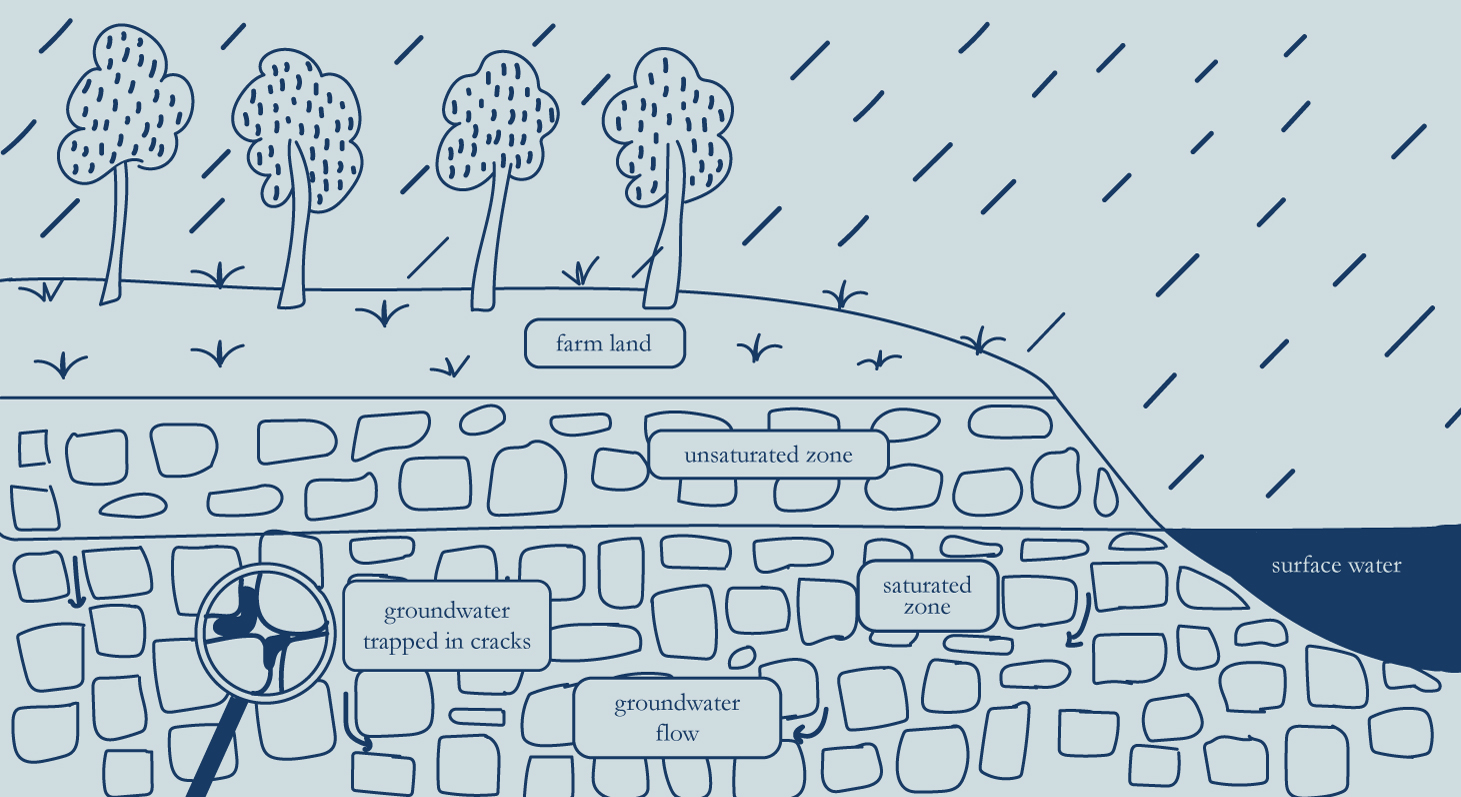heading
Where does the water go?
Our human rights depend on safely managed sanitation. The Human Rights to Water and Sanitation as well as the Human Right to a Healthy Environment are vulnerable to the downstream impacts of poorly managed sanitation.
Groundwater remains a key source of drinking water around the world but contaminated water can impact human right to water and sanitation. Contaminated water can also tap its way into agricultural fields through irrigation, which can heavily impact food security.
Groundwater is endangered by the uncontrolled disposal of human excreta, especially in densely populated urban settlements, and the absence of sustainable sanitation systems in fast-growing cities and peri-urban areas.
Untreated water from toilets can also enter water streams such as rivers or oceans and threaten human right to a healthy environment. A source to sea systems approach to sanitation is needed to ensure progress on sanitation isn’t made at the cost of the environment.
Sustainable, safely managed, resilient sanitation systems are crucial for safe drinking water, food security and a clean and healthy environment.
Where does the water flow?
We have put together a flowchart of how poorly managed sanitation flows downstream.
Get the graphicHere are five areas of concern outlined by UN Water:
- Pit latrines and septic tanks: In a densely populated community, pit latrines as well as poorly constructed and managed septic tanks can result in significant pollution of shallow aquifers and nearby water bodies. This can lead to disease outbreaks via contaminated waterpoints and harmfully high nutrient loading in water supplies and nearby lakes.
- Faecal sludge disposal by landfill: Where human waste is taken from pit toilets and septic tanks and disposed of with other solid waste in landfill sites without impermeable layers and good effluent management, the potential for groundwater pollution is high.
- Irrigation with untreated wastewater: Farms and municipal authorities sometimes use untreated wastewater for irrigation. This poses a major health risk for farmers and consumers of leafy vegetables irrigated with this untreated wastewater, as well as when practised near unprotected public water wells and human settlements.
- Sewerage outfall: In towns and cities where sewers are used to take away effluent, the arrangements for wastewater disposal and reuse are often inadequate, with significant pollution risks for the aquifers under land or rivers where the sewage is dumped.
- Climate change impacts: In areas with intensifying rainfall, pit latrines, septic tanks and open sewers can get flooded, spreading human waste into soil and surface water. Conversely, in areas with worsening drought, sanitation systems such as pour-flush latrines may become unusable, forcing people to relieve themselves outside.
Get to know Groundwater
Groundwater makes up 99 percent of all freshwater that is not frozen. It provides nearly half of the world’s population with drinking water and contributes to about half of the global food production. For some 2.5 billion people in the world, groundwater is their one and only source of freshwater. And it is under threat.
Learn more








